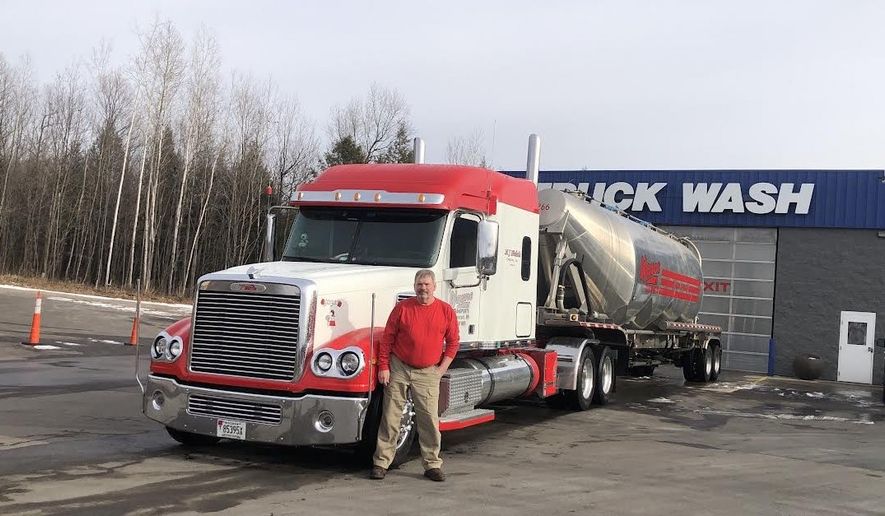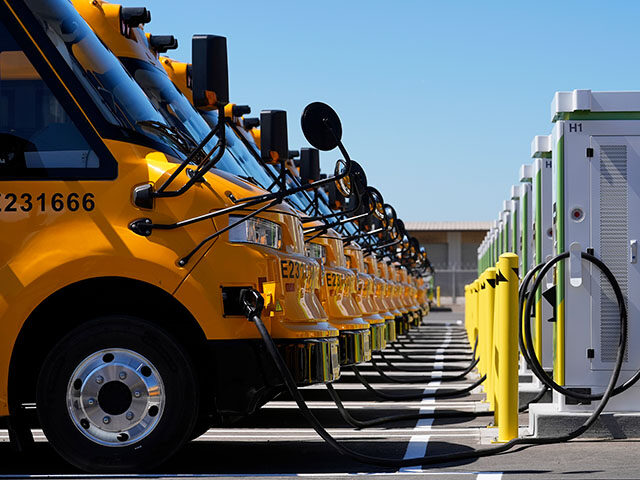‘Not ready for prime time’: Truckers fume over Biden’s EV mandate for big rigs

Mike Nichols, driving his diesel-fueled semitruck across Wisconsin to haul a load, pondered the idea of doing his job in an all-electric truck.
He told The Washington Times that “the fact is, it wouldn’t be able to work.” It’s not ready to be used in the public eye.
Truckers across the country are also expressing their concerns about what they call a logistical nightmare – the Biden Administration’s plans to make heavy-duty trucks electric.
Industry experts warn that President Biden’s plans may cause the transportation industry to collapse and consumer prices to soar.
|
Biden’s agenda on climate change includes the policies announced by the Environmental Protection Agency last week. By 2032, the rules will require that approximately 25% of all new heavy-duty vehicles or semitrucks be electric. The rules were more strict for passenger cars. Up to two thirds of all new models must be electric or hybrid by 2032.
“Even if I was given the truck, and they paid for the modifications I would have to do, I would still refuse it because it wouldn’t work,” Nichols stated. It’s a wishful thought on the part the administration to force manufacturers to make these things. “No one will buy them.”
Mr. Nichols tows a pneumatic trailer or “silo-on-wheels” that hauls grains such as flour, wheat, rice or other grains on trips between 200 and 1,000 miles in the Midwest. He can travel over 1,000 miles with a single diesel tank. The fuel required to transfer product from and to his tanker is also considerable.
The same trip in an electric vehicle would require a dozen charging stops over a few days, compared to a two-day journey with a single tank of diesel.
“Anyone who drives a pickup knows that it won’t work,” said Mr. Nichols. If the consequences or repercussions weren’t as serious, this would be almost a joke.
Truckers face a number of roadblocks in the transition to electric vehicles. These include a reduced range, longer refueling times, less reliable performance during extreme weather conditions, and lower load capacities due to heavier vehicle weights. These factors will not be resolved in the next eight years.
In 2022, the average diesel-powered long-haul semitruck with a sleeper cabin was worth $160,000. According to a Department of Energy study, its all-electric equivalent costs $457,000. Diesel-powered daycabs without sleeper cabins cost $117,000 The electric version costs $211,000.
Long-haul electric truck ranges were limited to 500 miles. Diesel-fueled trucks are able to travel up to 2,000 miles per tank.
The American Trucking Associations’ President and CEO Chris Spear stated that the mandate targets are “totally unachievable” given the state of the zero-emissions technology, the lack charging infrastructure, and the restrictions on the electricity grid.
Each long-hauler will need to have a designated place to recharge over night. The parking situation for drivers to stop and sleep at night is already a problem. According to the Owner Operator Independent Drivers Association, (OOIDA), which represents truckers such as Mr. Nichols that own their rigs but haul for different clients, only one parking space is available per 11 trucks.
Lewie Pugh, Executive Vice President of OOIDA told The Times: “It is very frustrating. A lot of the stuff they demand or mandate for truckers to perform are not available.” It’s not yet ready and not usable.
Mr. Pugh claimed that the administration had not consulted his trade group prior to the EPA’s finalizing the regulations. He claimed that officials were more concerned with Mr. Biden’s green energy agenda rather than its actual impacts.
Mr. Pugh stated, “It appears to me that they are only interested in listening or talking to extreme environmentalists.”
Ali Zaidi, the White House’s climate adviser, did not reply to a comment request.
The EPA said in a press release to The Times that it had considered factors highlighted by truckers before finalizing the rule, and that they “received substantial input” from representatives of the industry.
An EPA spokesperson stated that “The engagement with trucking industry included a meeting with OOIDA as well as public testimony and written comments from OOIDA.”
OOIDA claimed that the EPA did not contact the organization regarding the new regulations. The Times reported that the group had not spoken to the federal agency since 2018, when the Trump administration was in power.
The EPA stated that it would “actively engage” and “monitor the progress being made by the trucking industries, which will “help the EPA determine whether any potential modifications to the Phase 3-program are warranted.”
Speaking to reporters last week, EPA Administrator Michael S. Regan downplayed concerns from the industry.
He said, “There are a number of options available to truck drivers and operators that allow them to give their customers a choice while still maintaining the stringent environmental goals that we’ve set.”
Wayne Winegarden is a senior fellow at the Pacific Research Institute, a think tank that specializes in business and economy. He criticized the administration for its “disingenuous logic” as “an illusion that if you build it, people will come”.
Winegarden explained that the price of diesel cars would need to increase enough for enough people to be willing to purchase an electric vehicle instead. “You are creating an artificial shortage of trucks. The [pandemic] locksdowns provide a good example of what happens when trucks cannot deliver the goods.”
The EPA’s rules allows a variety of zero-emission vehicles, such as hybrids, plug in hybrid electrics (PHEVs), battery electrics, and hydrogen fuel cell, to meet the goals. This rule applies to all delivery trucks, refuse trucks, public utility vehicles, transit, shuttle, and school buses.
Environmental Defense Fund estimates there are less than 13,000 electric trucks amongst the 12 million vehicles on U.S. highways, which range from delivery vans and tractor-trailers.
Industry leaders are concerned that the administration should focus on trucks that travel local routes during the day and can return to charge at night, like those used by Amazon which go approximately 250 miles per charge. According to OOIDA, approximately half of all truckers’ trips exceed 500 miles and 25% exceed 1,000 miles.









No Comments